Instead of tossing your dirty whiteboards because they are covered in stubborn stains, use isopropyl alcohol to make them good as new again, all while avoiding harsh chemicals! Plus, learn different methods to remove permanent ink stains, and how to clean your erasers.
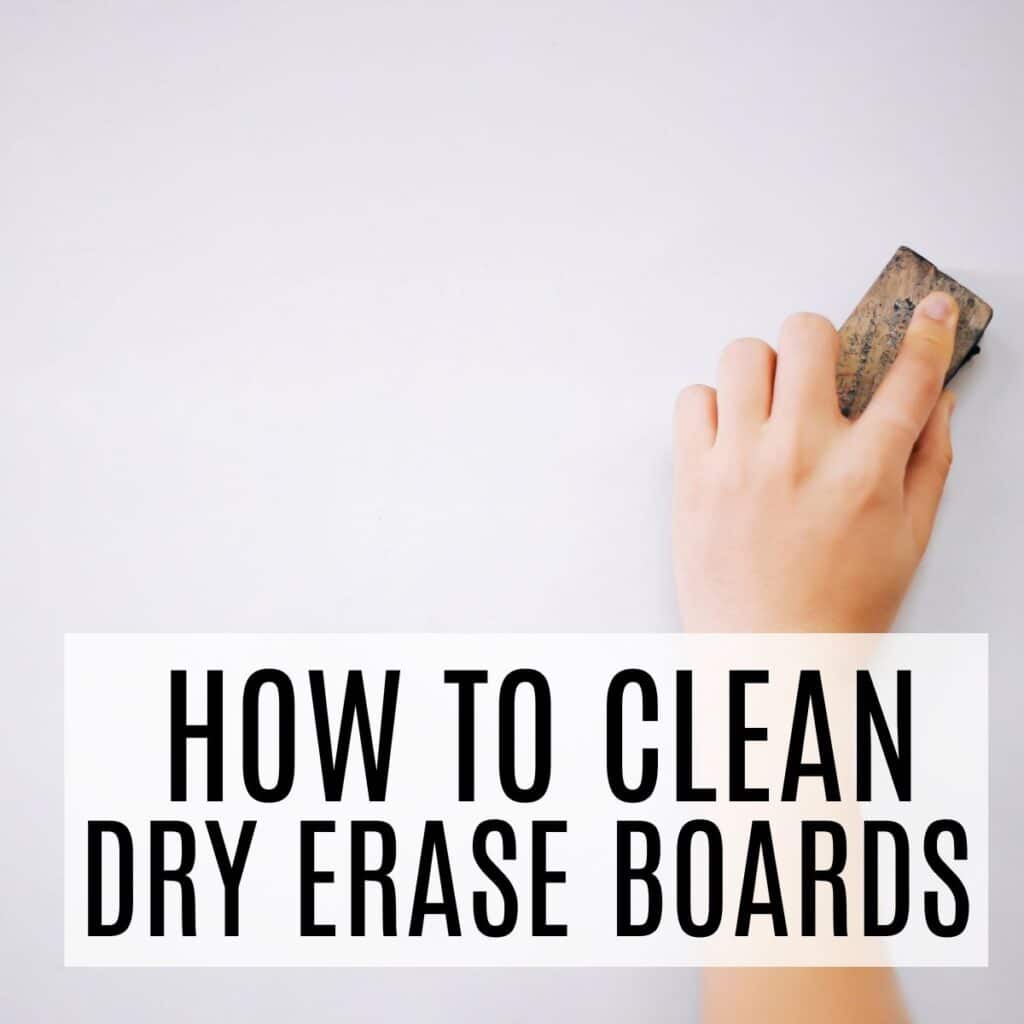
I love using dry-erase boards. We have one on the fridge that I use for carpool schedules and one that I use to make a list of what leftovers we have, so I don't forget about them.
It's so easy for me to quickly jot down a note and then erase it when I am done.
So I was thrilled when my husband had a huge one he could bring home from work. I had been wanting one to put in his office to write ideas for articles.
Unfortunately, the entire board that he brought home had stains on it. If the surface of your whiteboard is anything like the ones that I have, you probably have noticed that if you leave something written on it for very long, it still leaves behind stubborn marks and smudges.
However, getting rid of the leftover stains and smudges is easy. It only takes a few minutes to do and you probably already have the stuff you need in your house.
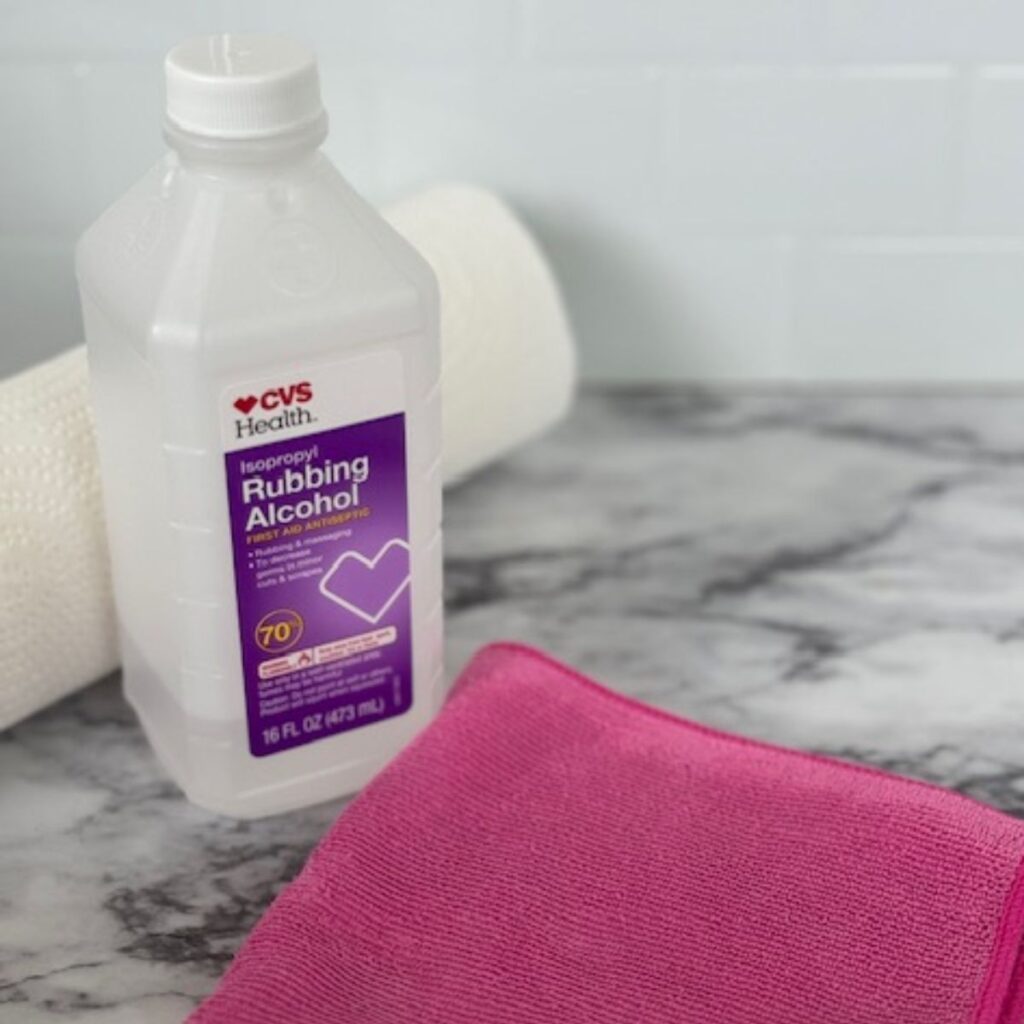
What You'll Need
- Alcohol - it needs to be at least 70%.
- Cloth - old rag or paper towels.
- Clean microfiber - to wipe once it's clean (I highly recommend the microfiber cloths here.)
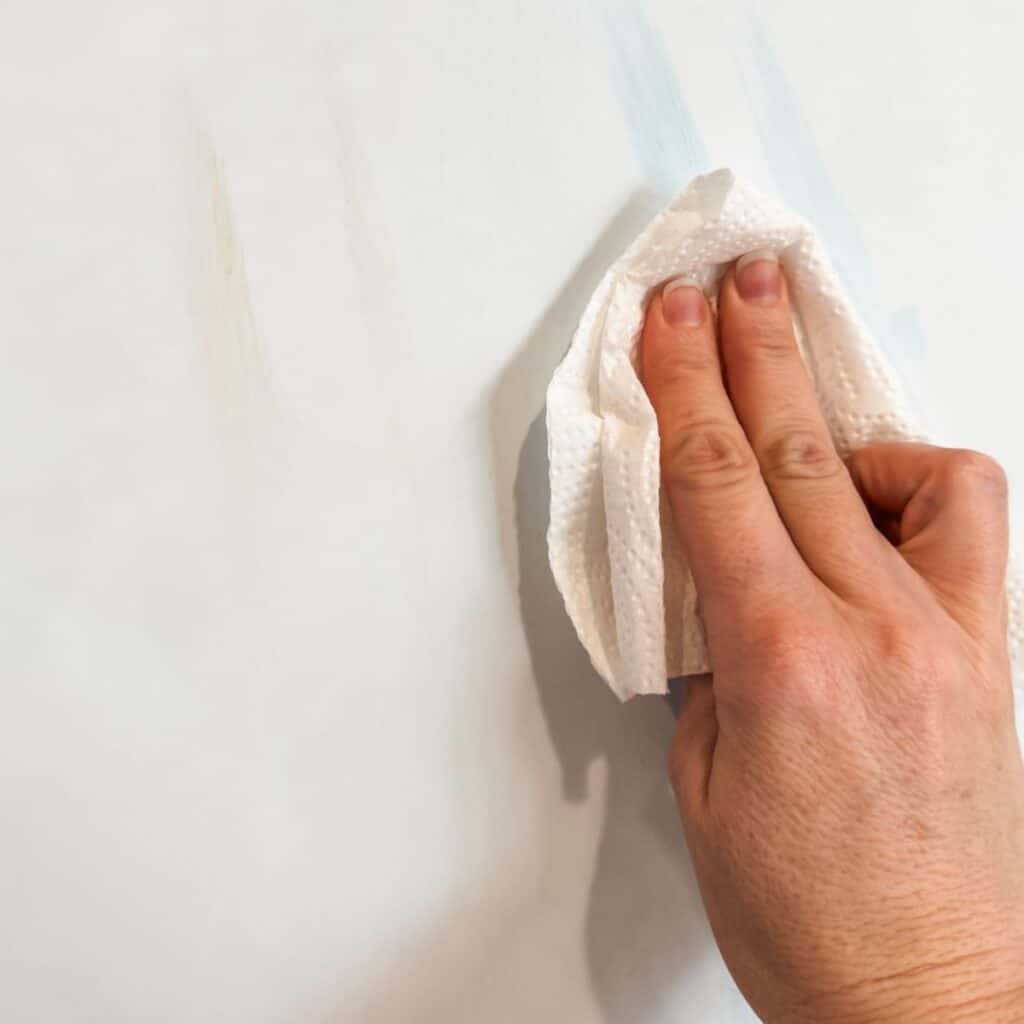
The Easiest and Cheapest Way to Clean a Dry-Erase Board
Step 1: Use your old cloth or paper towel to go across the entire whiteboard surface. This will remove any marker ink that is currently there.
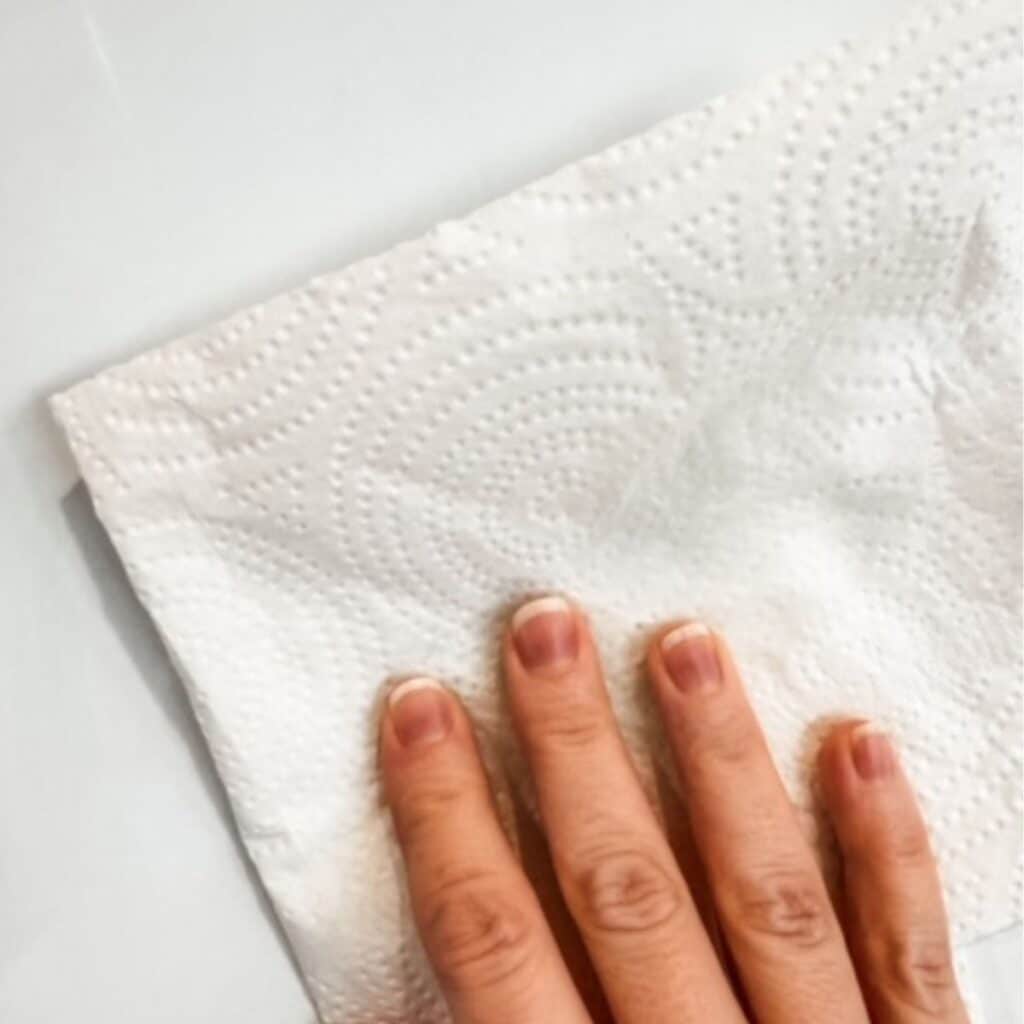
Step 2: Pour a little bit of rubbing alcohol onto the towel. Gently rub the board in a circular motion. If the stains are terrible, repeat the process.

Step 3: Before writing on the board, use a clean cloth to make sure all of the alcohol is removed.
How to Remove Permanent Marker Stains From a White Board
Maybe you accidentally picked up the wrong kind of marker and began writing before you realized it wasn't a dry-erase marker! Don't worry, we can clean that off too!
The first step is to trace over the permanent ink with a dry-erase marker. That sounds crazy, but the ink dissolves the permanent ink. Afterwards, wipe with a soft cloth. If there's still a little marker residue or old ink, use alcohol and follow the instructions above.
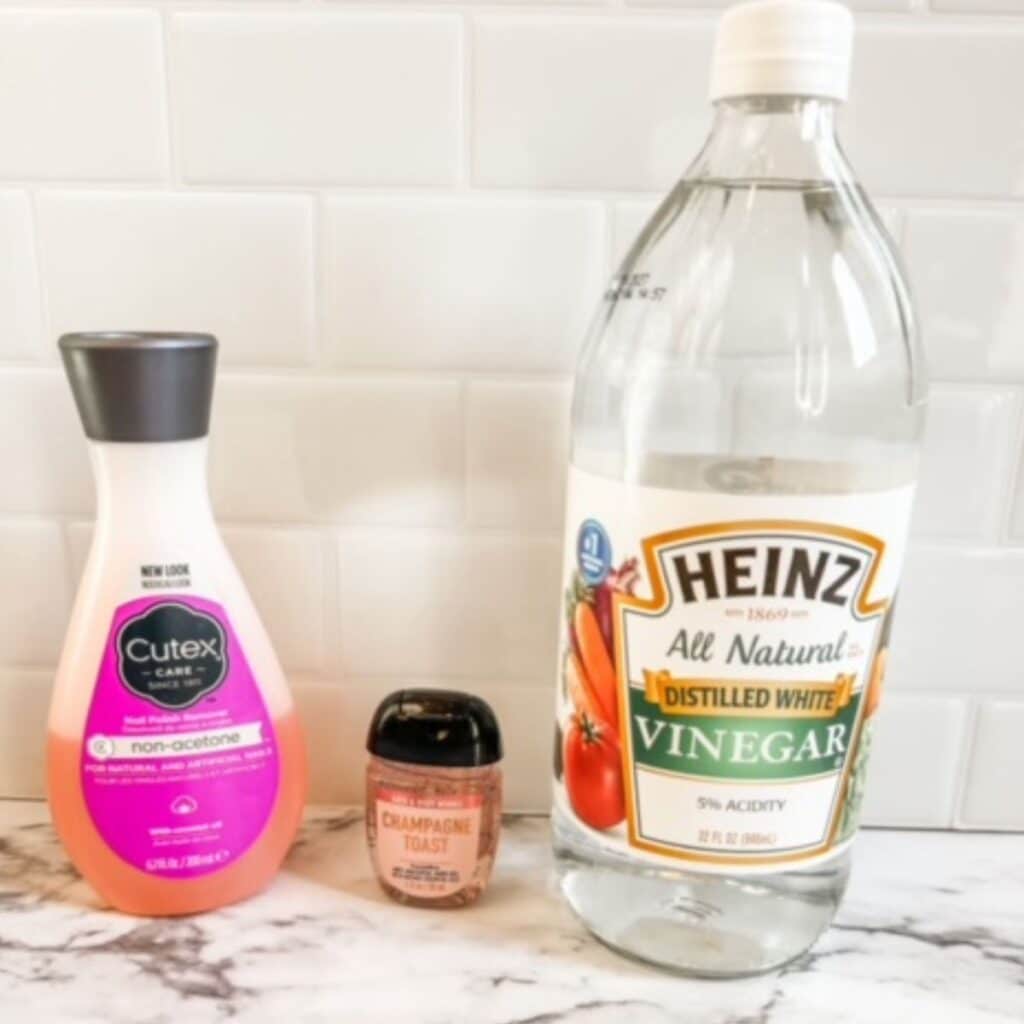
Other Household Items That Can Be Used
If you don't have alcohol on hand try one of these other methods.
- Hand sanitizer or glass cleaner - both contain alcohol, which is why this is the next best way if you don't have regular rubbing alcohol. See how I make DIY glass cleaner.
- Nail polish remover - normally acetone works the best.
- White vinegar- just the plain kind from the grocery store.
Be sure to test in a small area before cleaning the board when using other cleaners.
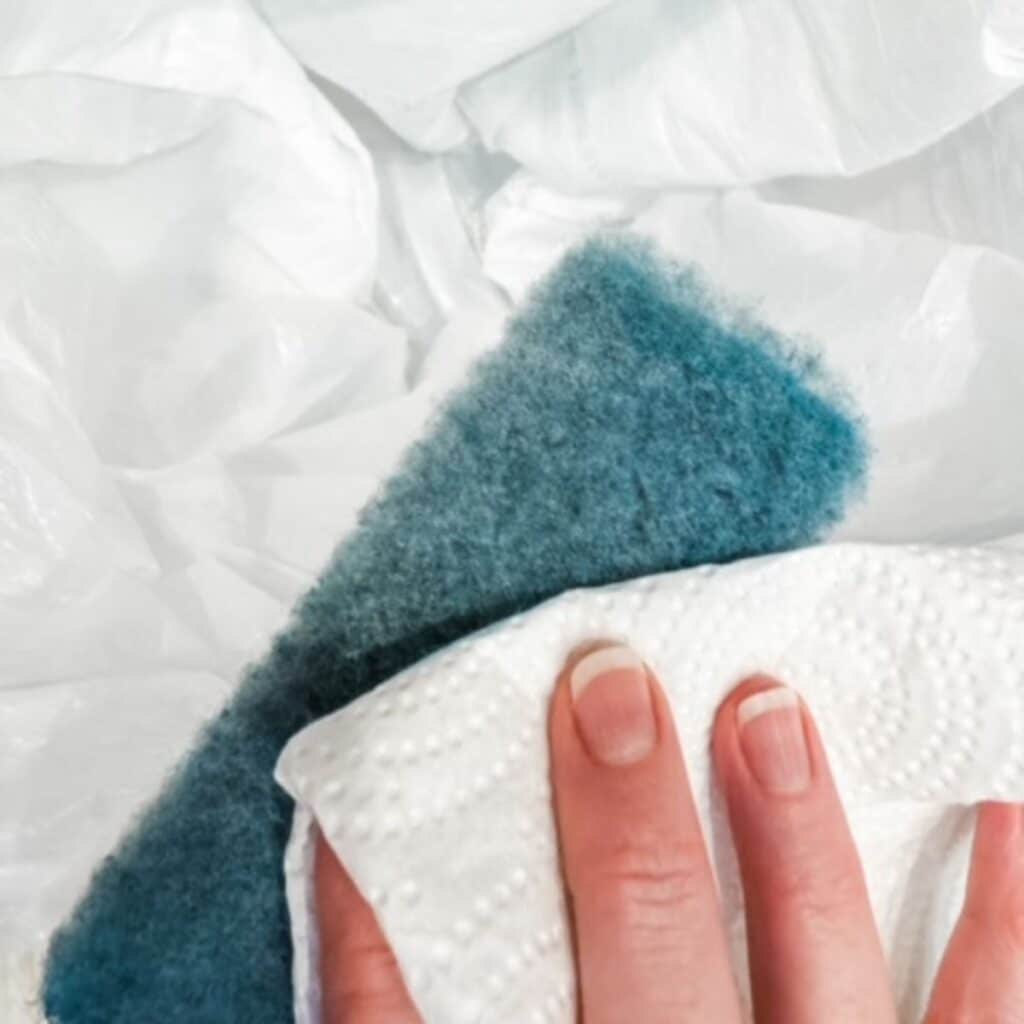
How to Clean a Whiteboard Eraser
Now that you know how to clean whiteboards, let's dive into the best way to clean dry-erase erasers. Cleaning the erasers should also be a part of regular maintenance because the dry-erase ink stays in these and causes smudges on the boards over time.
Step 1: Use a soft brush or paper towel to gently rub over the erasers. Do this over a paper towel, sink, or garbage can because the dry-erase ink flakes out all over the place.
Step 2: Combine warm water with a few drops of dish soap in a container.
Step 3: Gently scrub the felt eraser.
Step 4: Rinse with cold water.
Step 5: Allow the dry eraser to air dry completely before using it again.
Step 6: Discard the remaining cleaning solution.

Free Weekly Cleaning Printable
Clean your home in under 30 minutes a day with this free Weekly Cleaning printable!
Helpful Tips
- While you can buy commercial cleaning products that will do the same, we like to avoid abrasive cleaners when possible. Plus, it's much cheaper.
- Add regular cleanings to your list of things to do when it comes to your whiteboard. The more often they are maintained, the less you will have to clean with alcohol.
- Not all whiteboard markers are created equally. We have had the best results with Expo, but some of the off-brands stain worse.
- It's a good idea to keep the alcohol in a spray bottle nearby so the cleaning process doesn't seem as daunting and you are more likely to clean it regularly.
- Dirty erasers can also contribute to a stained dry-erase board. Be sure to give them a thorough cleaning now and then.
- Do not use abrasives, they can scratch and ruin the dry-erase surface over time.
Common FAQs
Regularly erase markings, avoid using permanent markers, and clean the board with alcohol to prevent staining and ghosting.
Some whiteboards have a melamine surface. Melamine is a type of thermosetting plastic that is applied to a wood or particleboard substrate. While melamine boards are more affordable, they are less durable than other types and can be prone to staining and ghosting over time.
Higher-quality whiteboards often have a porcelain or ceramic steel surface. These are made by fusing a layer of porcelain or ceramic enamel onto a steel sheet. They are durable, resistant to stains, and provide a smooth writing and erasing surface. It is often more expensive but has a longer lifespan.
Some modern whiteboards are made with tempered glass surfaces. Glass boards are known for their sleek, high-end appearance, durability, and ease of cleaning. They are resistant to stains and ghosting, and their non-porous surface is easy to maintain.
Water alone can be effective for light cleaning, but for more stubborn stains and smudges, it's better to use alcohol.
Never worry about buying or using special whiteboard cleaner when you can do it yourself with rubbing alcohol!


Lindsey Mozgai says
Thanks for the tip :). My dry erase board really needs to be cleaned. It's in pretty rough shape!
Karen says
Nail polish remover also works.